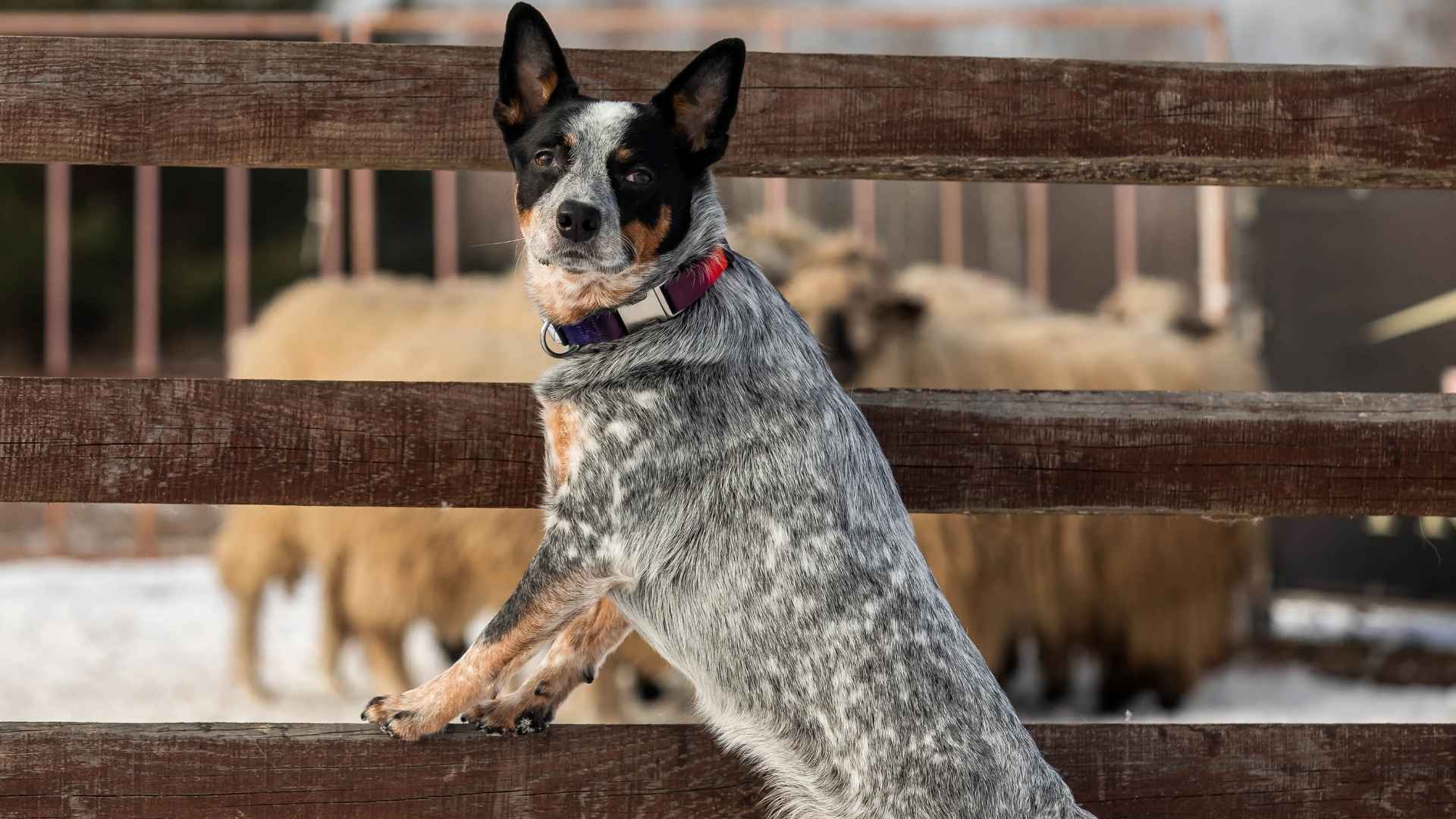On a peaceful farm, danger often lurks in the shadows—coyotes, foxes, and other small predators eye your livestock as an easy meal. That’s where specialized livestock guardian breeds come in, stepping up as vigilant protectors to keep your chickens, goats, sheep, and other animals safe.
These livestock guard dogs aren’t just pets; they’re dedicated guardians bred over generations to defend livestock with intelligence, courage, and fierce loyalty. Their keen senses and protective instincts make them invaluable partners for farmers and ranchers who depend on them to prevent losses and keep the farm thriving.
Whether it’s quietly patrolling the perimeter or standing their ground against an intruder, these breeds bring peace of mind to rural life.
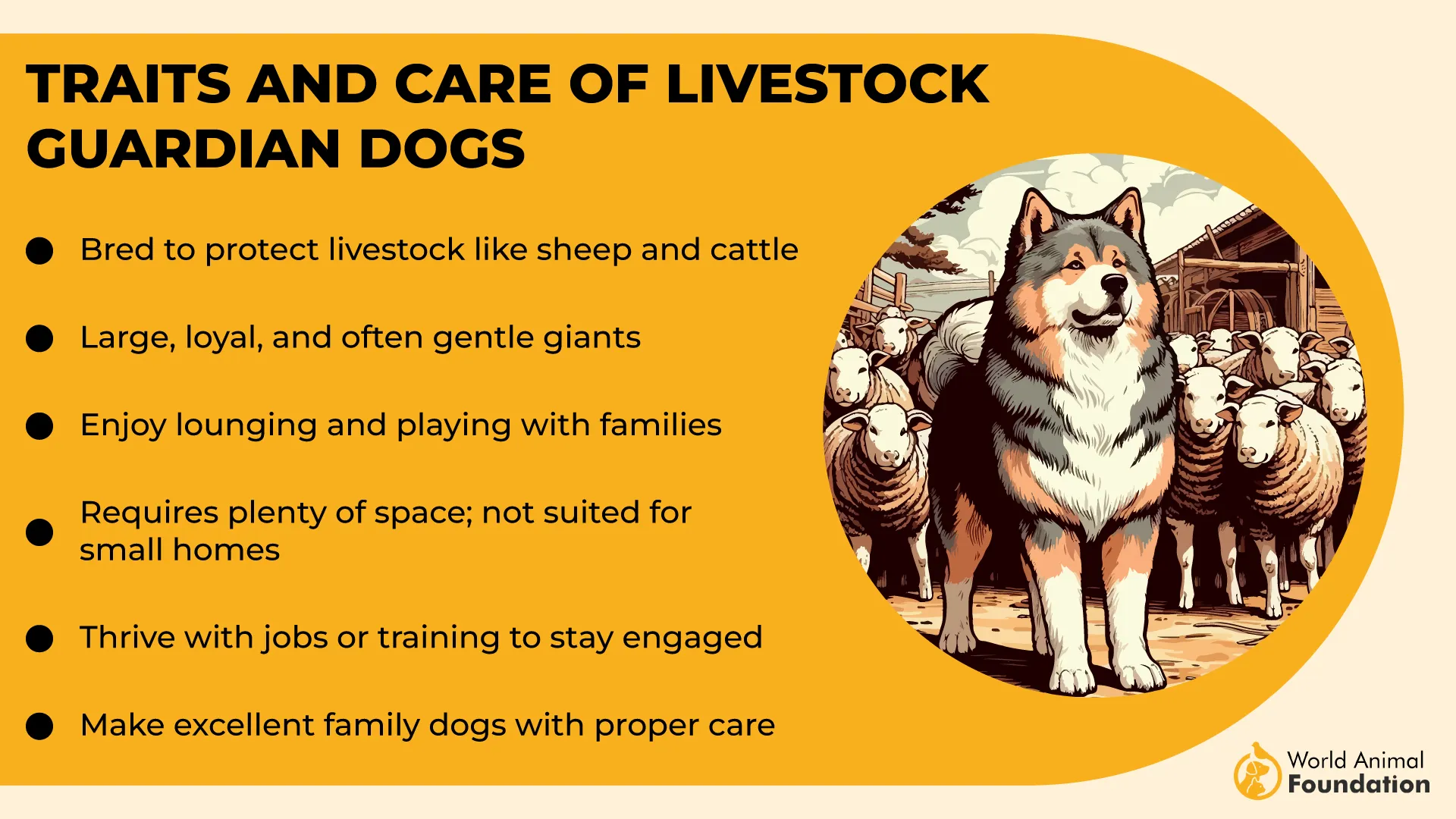
Here, we’ll introduce you to the top livestock guardian dog breeds, explaining why their unique traits make them the perfect defenders against the small predators that threaten your farm’s well-being.
Dog Breeds That Guard Livestock From Small Predators
1. Kuvasz
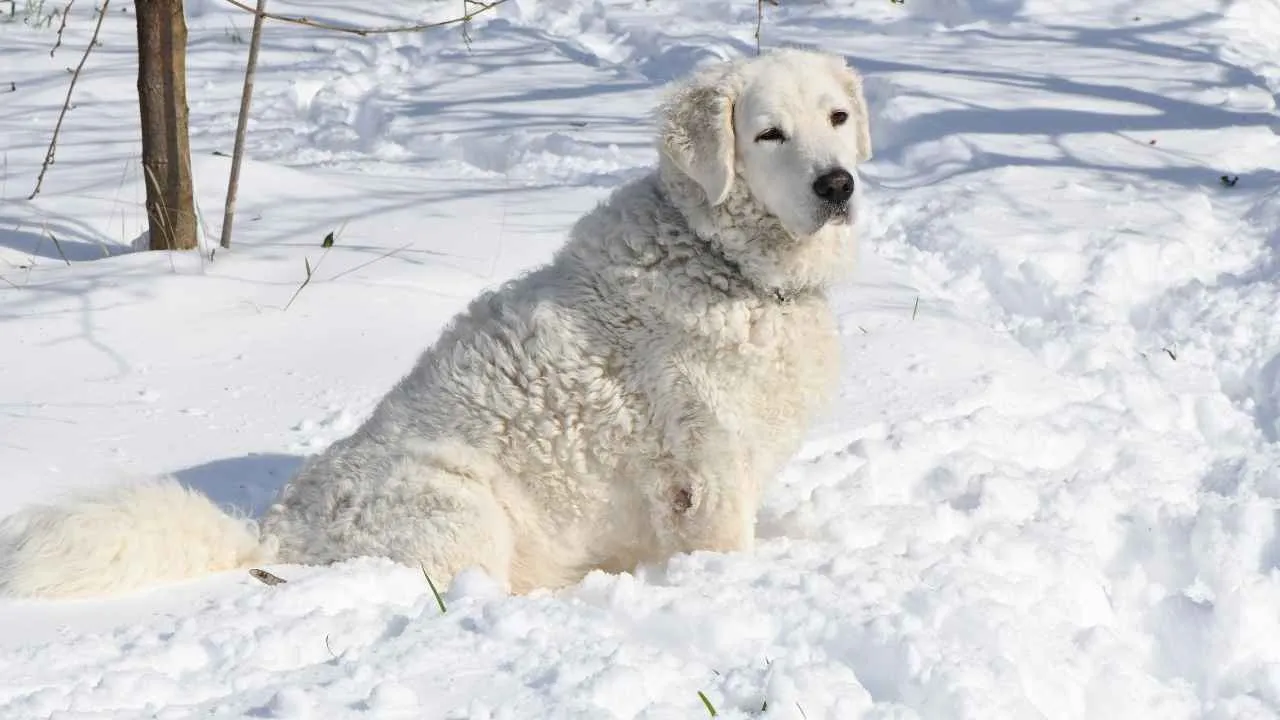
If a cloud could walk, glare, and protect your sheep from danger, it would probably be a Kuvasz. This ancient Hungarian guardian dog breed has been guarding flocks for centuries—back when “predator” meant wolves, bears, and thieves… and not just the neighbor’s nosy cat.
The Kuvasz isn’t your average cuddle-pup (though they do look like an oversized marshmallow). They’re highly intelligent, independent thinkers—meaning they’ll take your “sit” command under advisement, but if they think guarding the barn door is more important, they’re going to… guard the barn door.
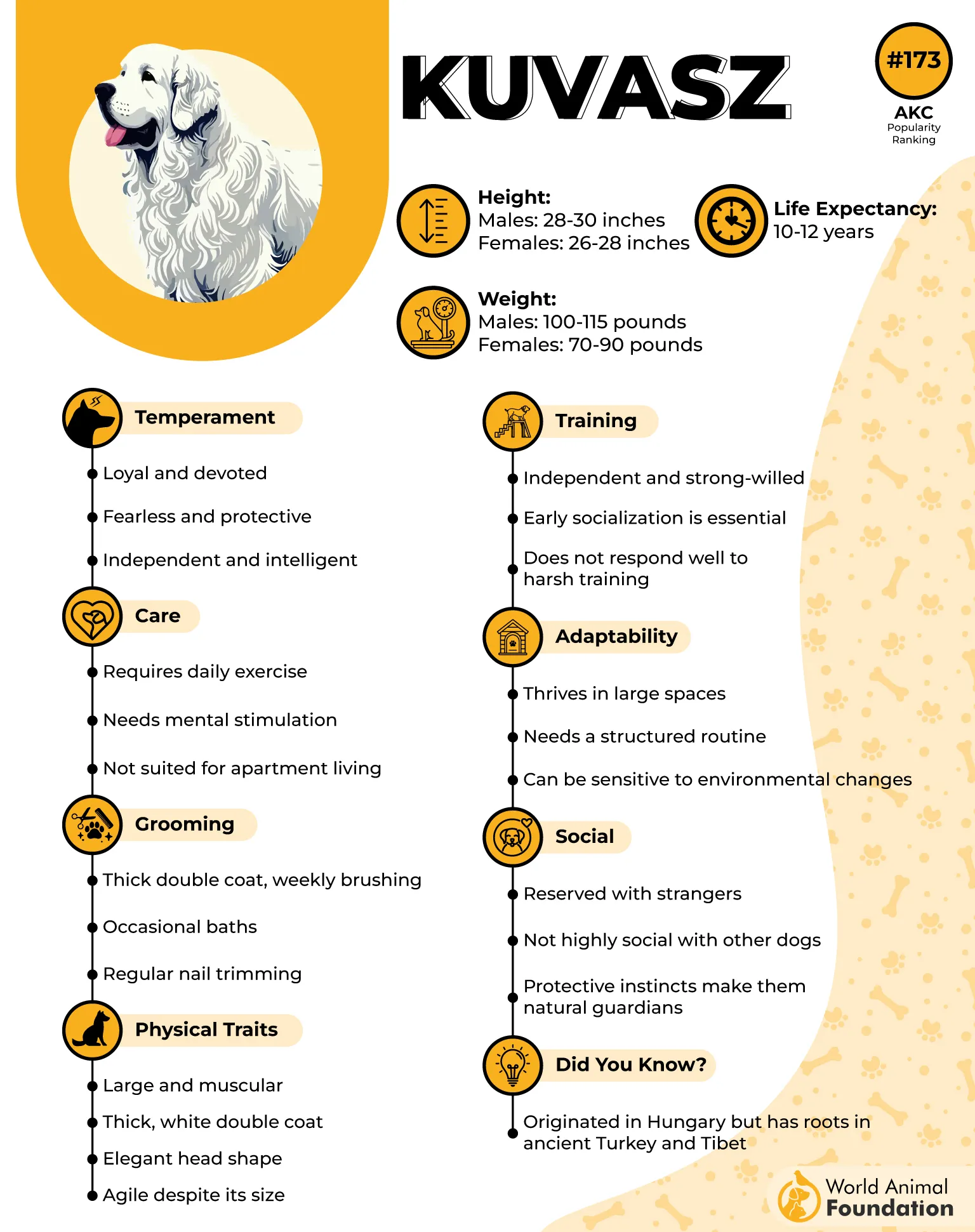
These livestock guardian dogs specialize in deterring smaller predators—think foxes, raccoons, coyotes, and maybe that one chicken-stealing raccoon who looks suspiciously like he’s wearing a burglar mask.
Their strategy isn’t about wild chases; it’s about presence. Standing tall, with a coat that practically glows in the sun, they radiate “You really don’t want to mess with me.”
And yes, they’ll bond with their flock like family. In fact, they’ll guard sheep, goats, and sometimes even your kids if you’re not careful. (Imagine explaining to your friends why your dog wouldn’t let them leave the yard.)
Fun fact: The Kuvasz’s white coat wasn’t just for beauty—it helped shepherds spot them in the fields at night. Also, it gave predators the false impression that this was just a fluffy sheep… until it moved toward them at 30 mph.
2. Komondor
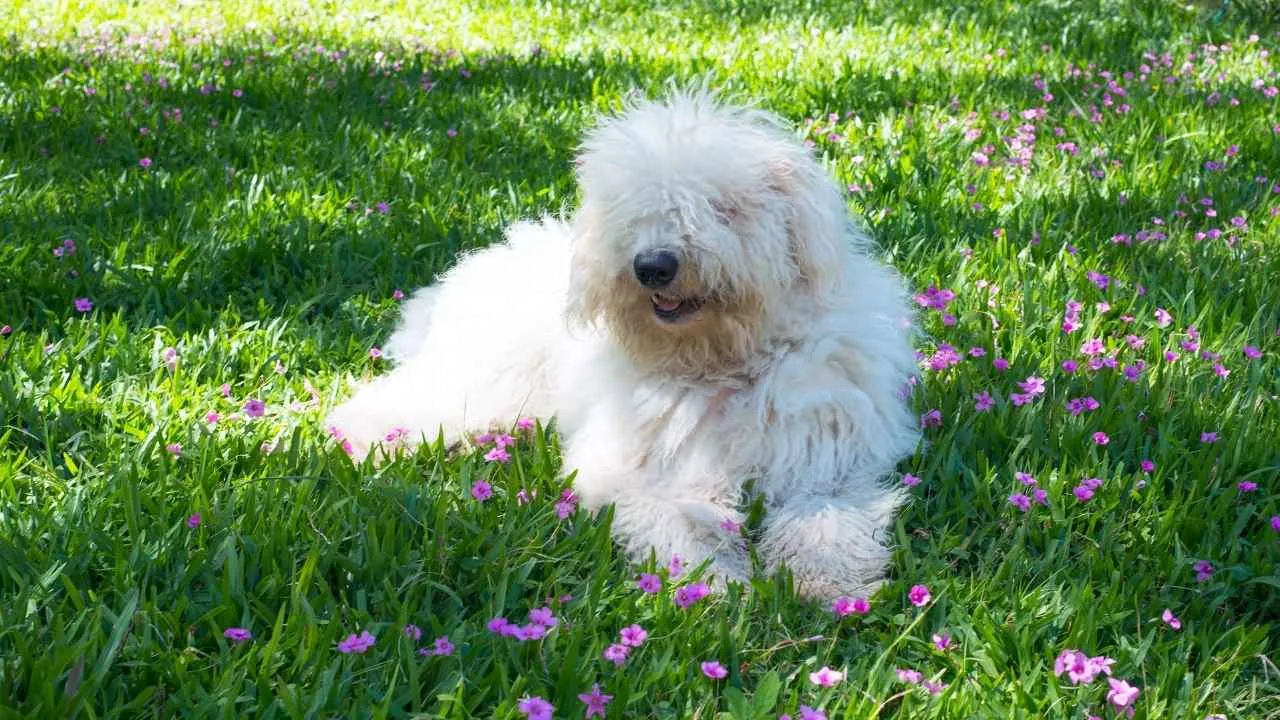
Imagine if a mop and a bodyguard had a lovechild—that’s the Komondor for you.
This Hungarian guardian is famous for its wild, corded coat that looks like it took fashion cues from the coolest dreadlock hairstyles ever.
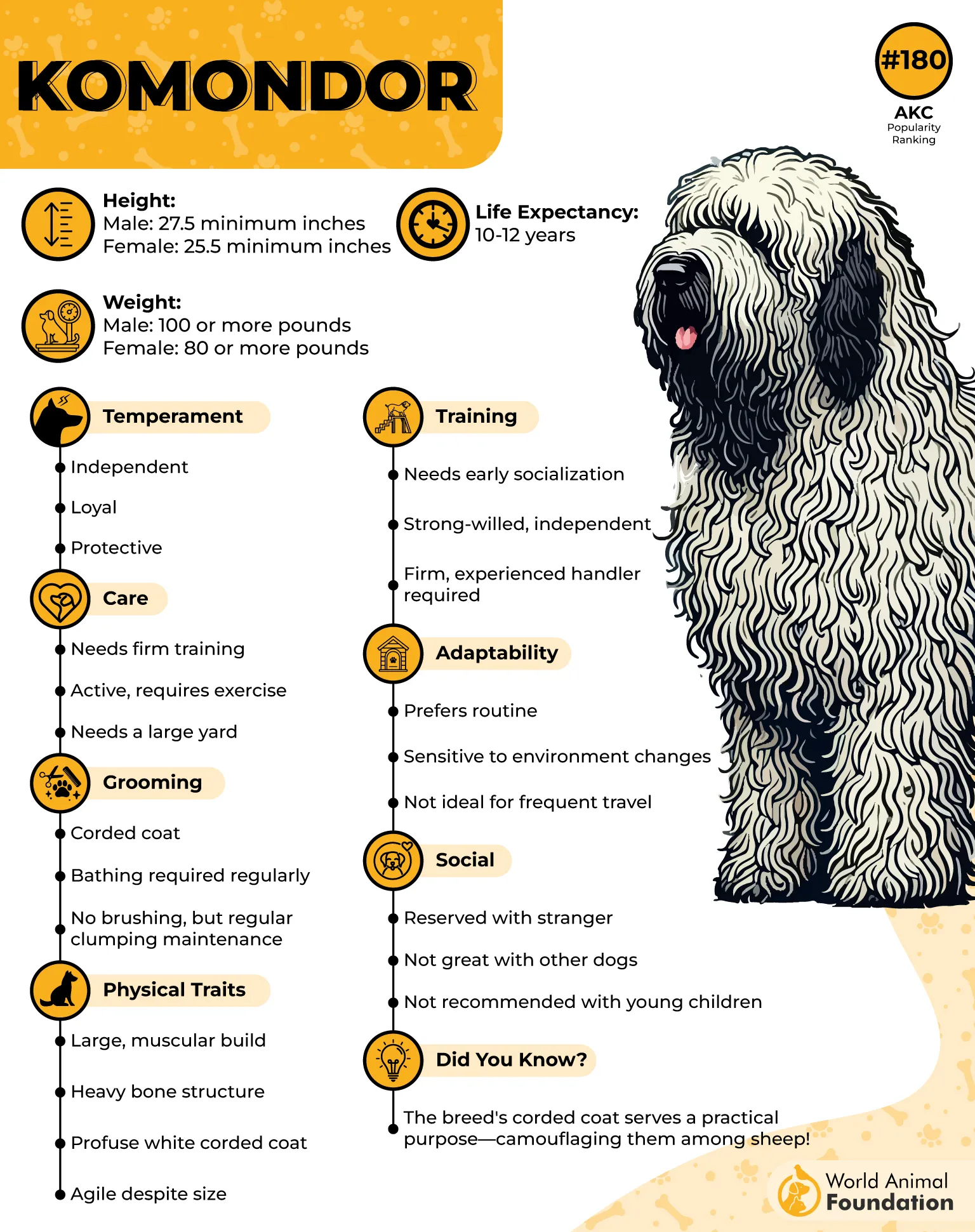
But don’t let the funky fur fool you—underneath that mop is a fierce protector who takes “guarding the flock” seriously. The Komondor’s coat isn’t just a style statement. It acts like natural armor, protecting the dog from wolf bites and harsh weather.
So when small predators like foxes or stray dogs try to sneak in for a midnight snack, the Komondor is ready to turn your pasture into Fort Knox.
These dogs bond deeply with their sheep and goats, often becoming the ultimate “sheep mom” with a no-nonsense attitude towards any creature that threatens their flock. And sure, they might look like a walking carpet, but trust me—when that coat moves, predators know something serious is coming.
3. Tibetan Mastiff
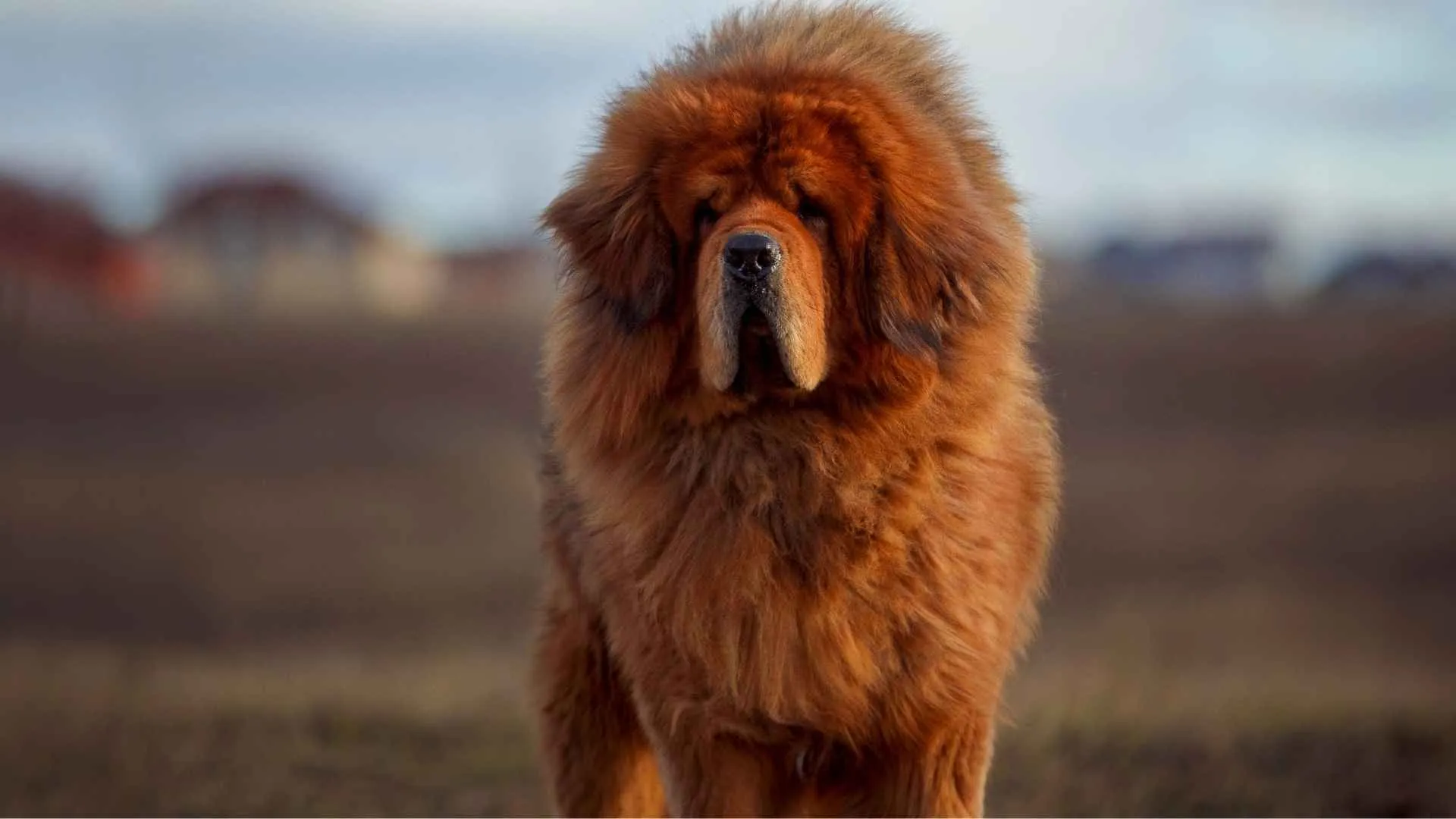
Tibetan Mastiff today is like that big teddy bear you want to hug all day—massive but mellow. But peel back the fluff, and you’ll find a dog bred to guard livestock high in the Himalayas, where the air is thin and the predators are not messing around.
This large dog was built tough, with a heavy coat that’s like a warm mountain jacket, perfect for freezing nights and rugged terrain.
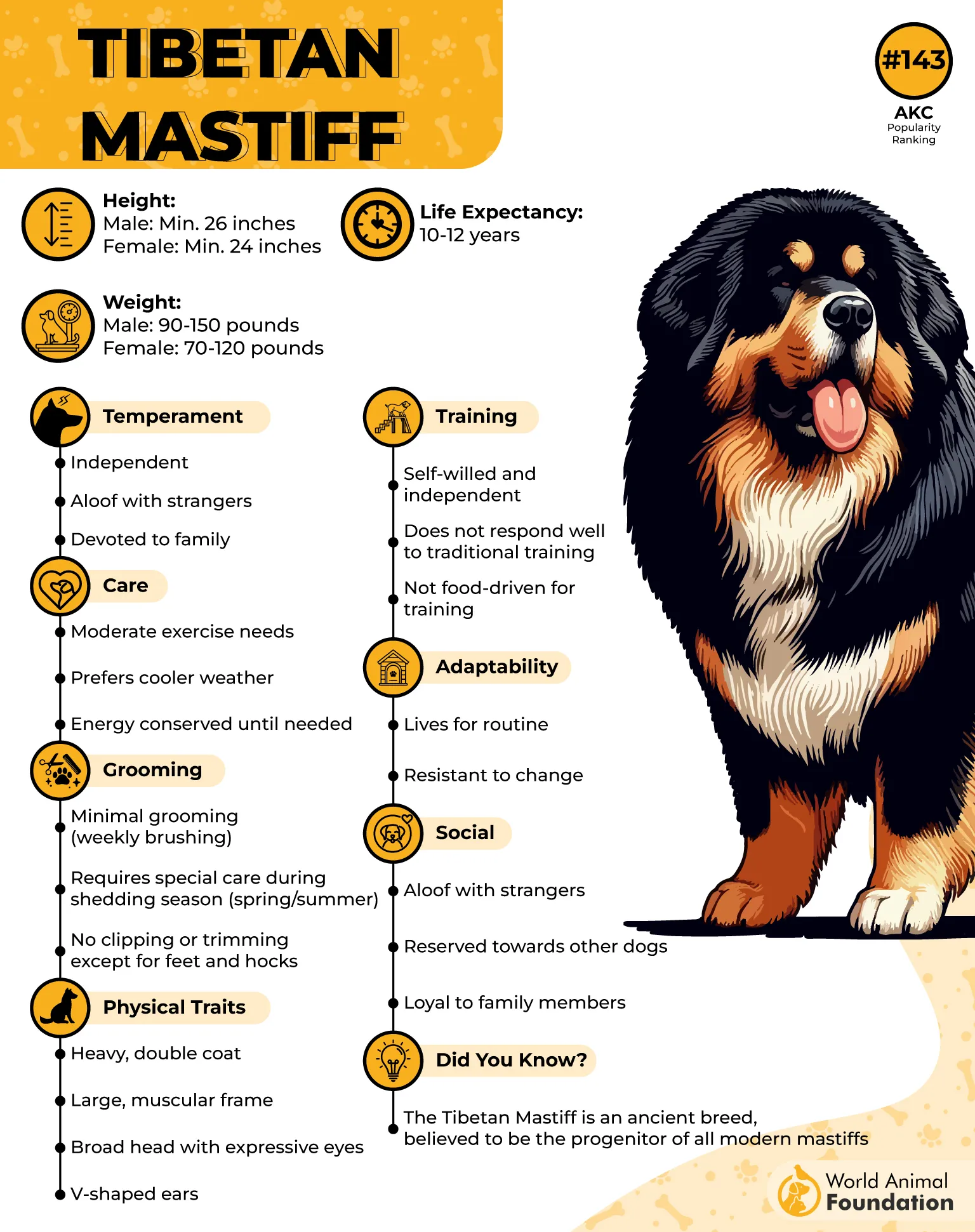
Their job? Stand guard over yak, sheep, and goats—and let’s just say, any predator (wolves, leopards, even sneaky foxes) thinking about a midnight snack quickly learn that the Tibetan Mastiff is not a bedtime story.
Despite their imposing size and bark that can probably shake loose your windows, these dogs are known to be calm and affectionate with their “people,” making them the perfect blend of gentle giant and fierce guardian.
Key factors for owners of a large Tibetan Mastiff include their strong-willed temperament and tendency to be reserved with strangers.
They require ample living space, early socialization to develop good behavior, and can incur significant costs for food and medical care. Additionally, potential health issues are an important consideration for this breed.
4. Kangal
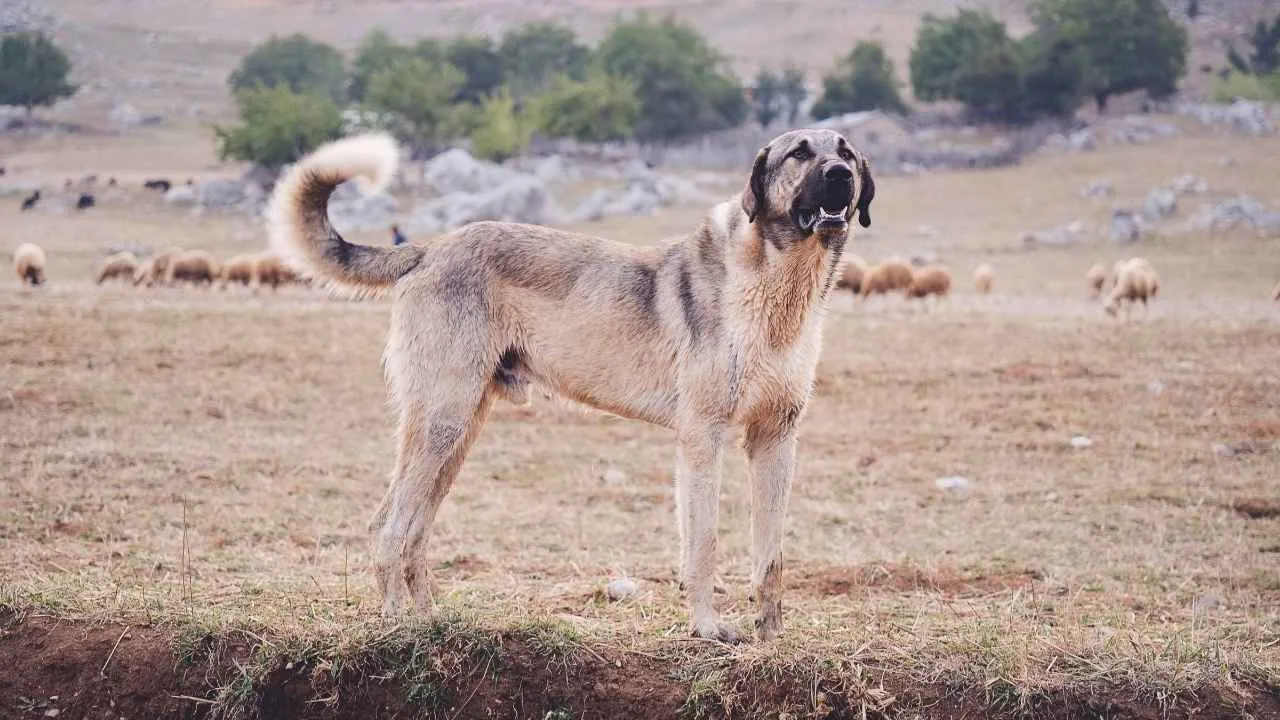
Meet the Kangal, the heavyweight champ of livestock guardians hailing from Turkey. These dogs are basically the bouncers of the Anatolian plains, built to take on wolves, jackals, and any predator that dares to crash the farm party.
Don’t let their calm, noble appearance fool you—Kangals have a bite force so legendary it’s practically the superhero power of the dog world.
But here’s the kicker: they’re gentle giants with their flocks, acting more like a patient bodyguard than an angry pitbull.
While intelligent, they are independent thinkers who can make decisions on their own, especially when they believe it’s necessary. This strong-willed nature makes training challenging, and they are definitely not a good fit for inexperienced dog owners.
Kangals are all about smart protection. Instead of just charging in, they use their size, presence, and a deep, commanding bark to send predators packing. It’s like having a linebacker with a PhD in “Stay away from my sheep.”
5. Australian Cattle Dog
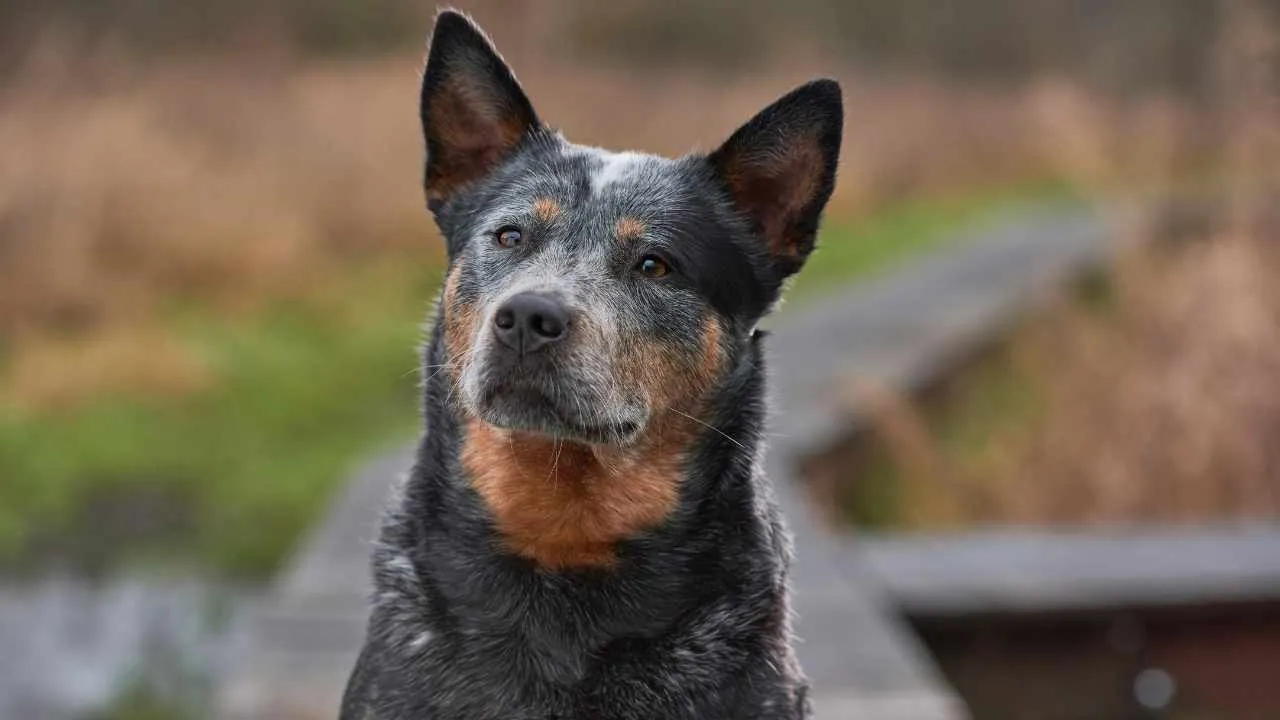
Now, flip the script and meet the Australian Cattle Dog—a smaller, lightning-fast herding maestro with a “get-things-done” attitude. These dogs don’t just guard; they manage. Think of them as the ultimate herding ninja who keeps the cattle moving in line and out of trouble.
Originating from the wild Australian outback, these pups are smart, tough, and have energy levels that make coffee nervous. While they aren’t traditional livestock guardians in the “fend off predators” sense, their alertness and tenacity mean they’re the first line of defense against small pests and intruders.
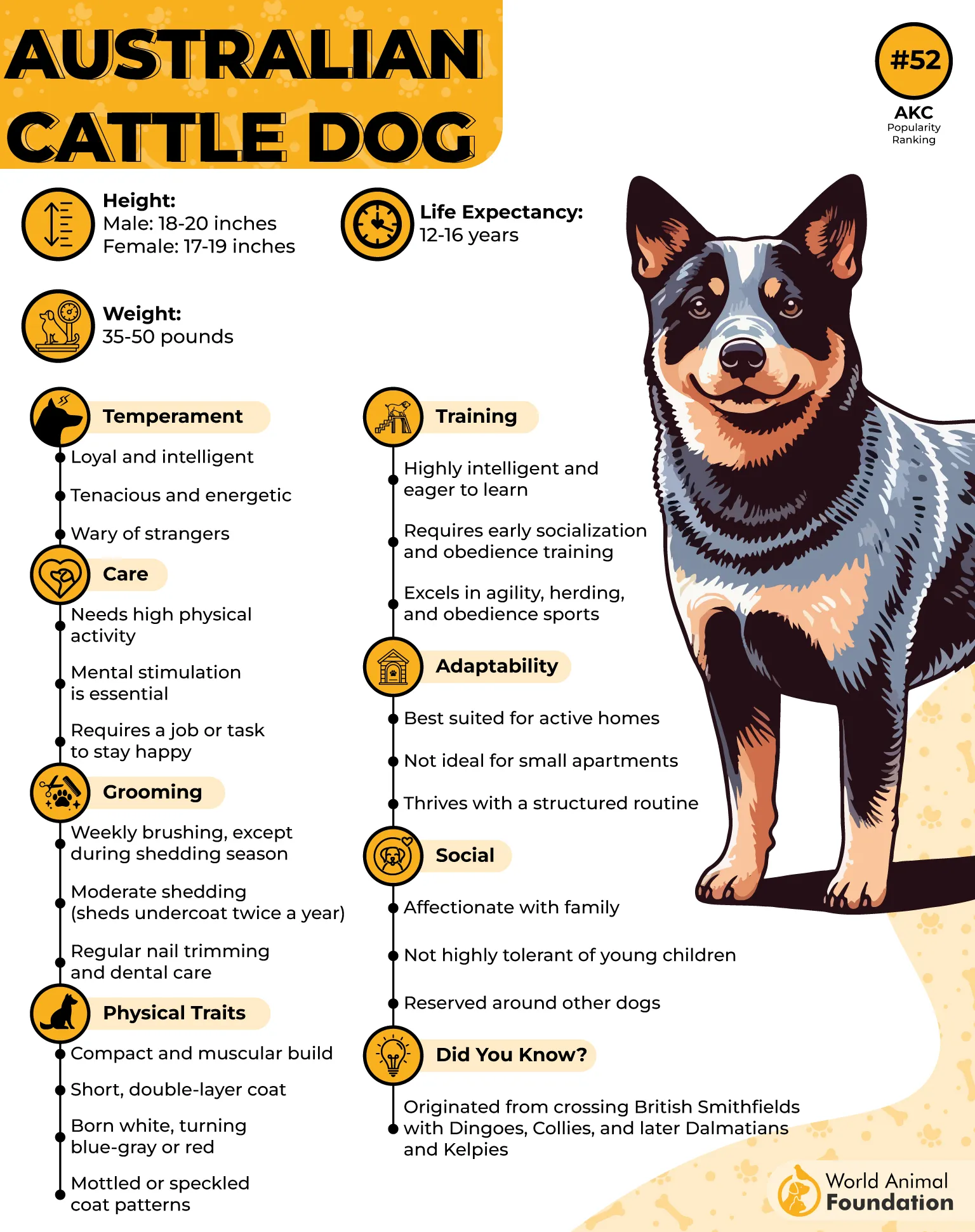
They’re fiercely loyal, problem solvers, and ready to chase down any critter that tries to cause chaos in the herd—kind of like your personal farm security with a built-in GPS and turbo boost.
The Australian Cattle Dog excels in herding and shines in various dog sports like agility, obedience, tracking, lure coursing, dock diving (jumping into water to retrieve objects), disc catching, and nose work.
As per Britannica, due to its high energy and strong-willed nature, it may not be the best fit for young children or seniors unless well-trained.
While playful and affectionate with family and other pets, the breed can be wary of strangers and may show aggression toward unfamiliar dogs. It’s also an outstanding watchdog and protection dog.
6. Anatolian Shepherd Dog
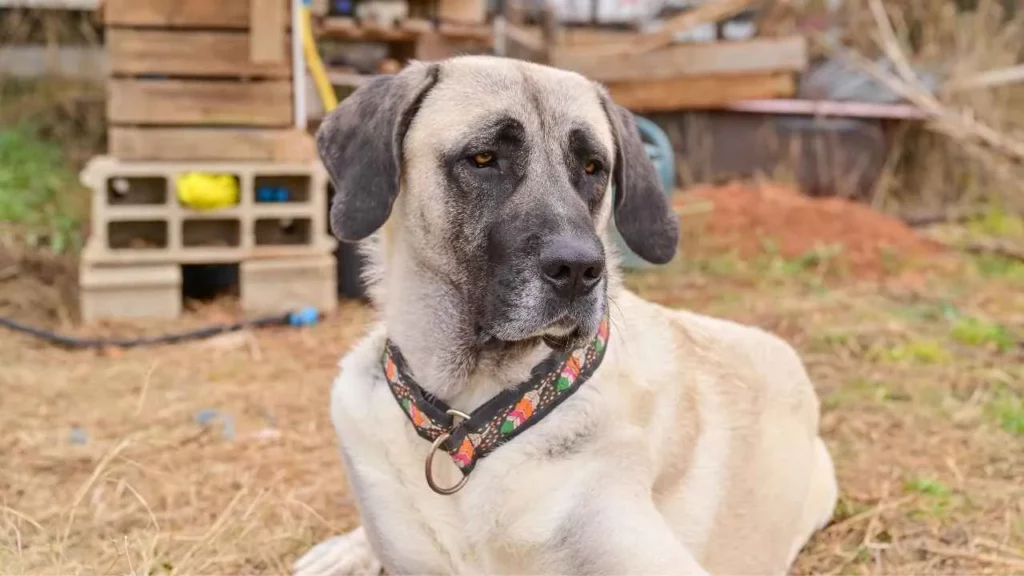
Also known as the Kangal Shepherd Dog (yes, sometimes these names throw us for a loop!), the Anatolian Shepherd is Turkey’s answer to “Who’s going to keep these sheep safe and look majestic doing it?”
This breed was bred for one serious job: protecting sheep and goats from predators—big and small. They’re like the ultimate security system on four legs, with an attitude that says, “You shall not pass!”
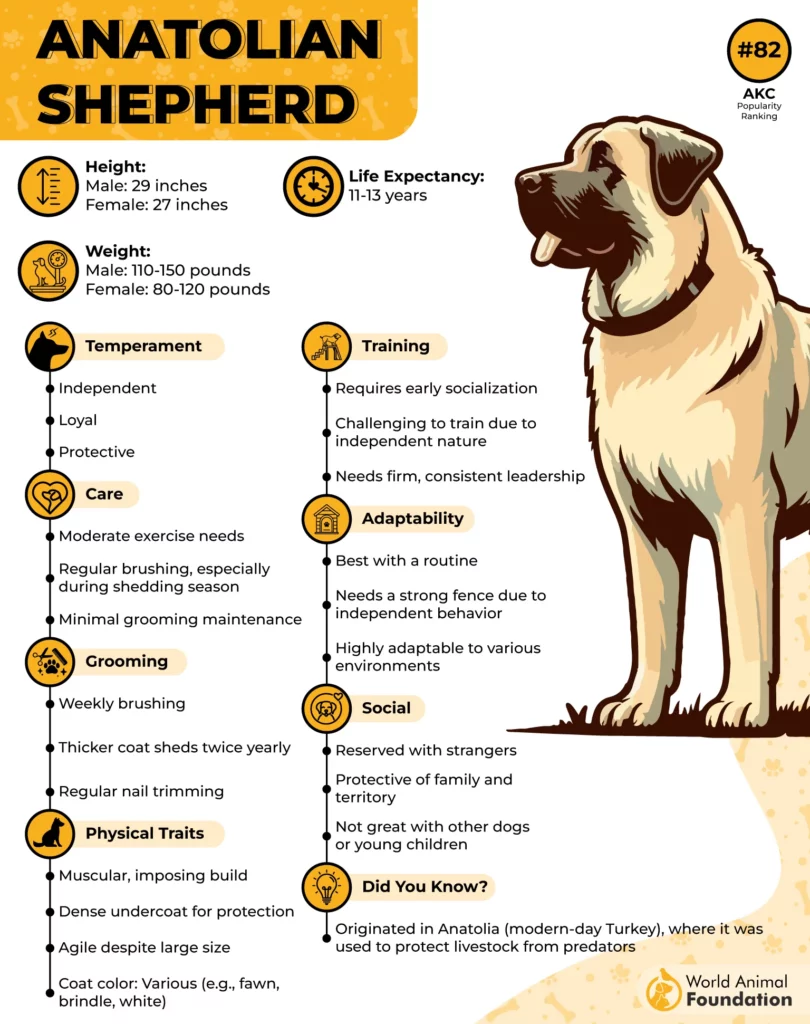
What makes the Anatolian Shepherd truly special is their calm loyalty. These dogs aren’t hyperactive alarm systems; they’re more like the calm, steady presence that watches over the flock all day and only gets serious when trouble approaches. It’s like having a zen master and a bodyguard rolled into one furry package.
But here’s the catch: because they are territorial guardians, Anatolians need early socialization—think puppy playdates and friendly introductions—to make sure they grow up well-adjusted. Otherwise, their protective instincts might get a little overzealous, and suddenly, your mailman feels like a wolf pack leader.
According to the American Kennel Club (AKC), So, if you’re thinking about adding an Anatolian Shepherd to your team, owners need to be strong leaders who can confidently manage a dog that is both dominant and demanding, yet calm and affectionate.
7. Great Pyrenees

Originally bred in the towering Pyrenees Mountains to protect sheep from wolves, the Great Pyrenees is basically a giant, snowy cloud with a built-in security system. They’re big, beautiful, and as gentle as a marshmallow… until some sneaky predator shows up. Then it’s game on.
At home, these dogs are total sweethearts—think giant teddy bears who love to cuddle and have zero chill when it comes to protecting their people and flocks.
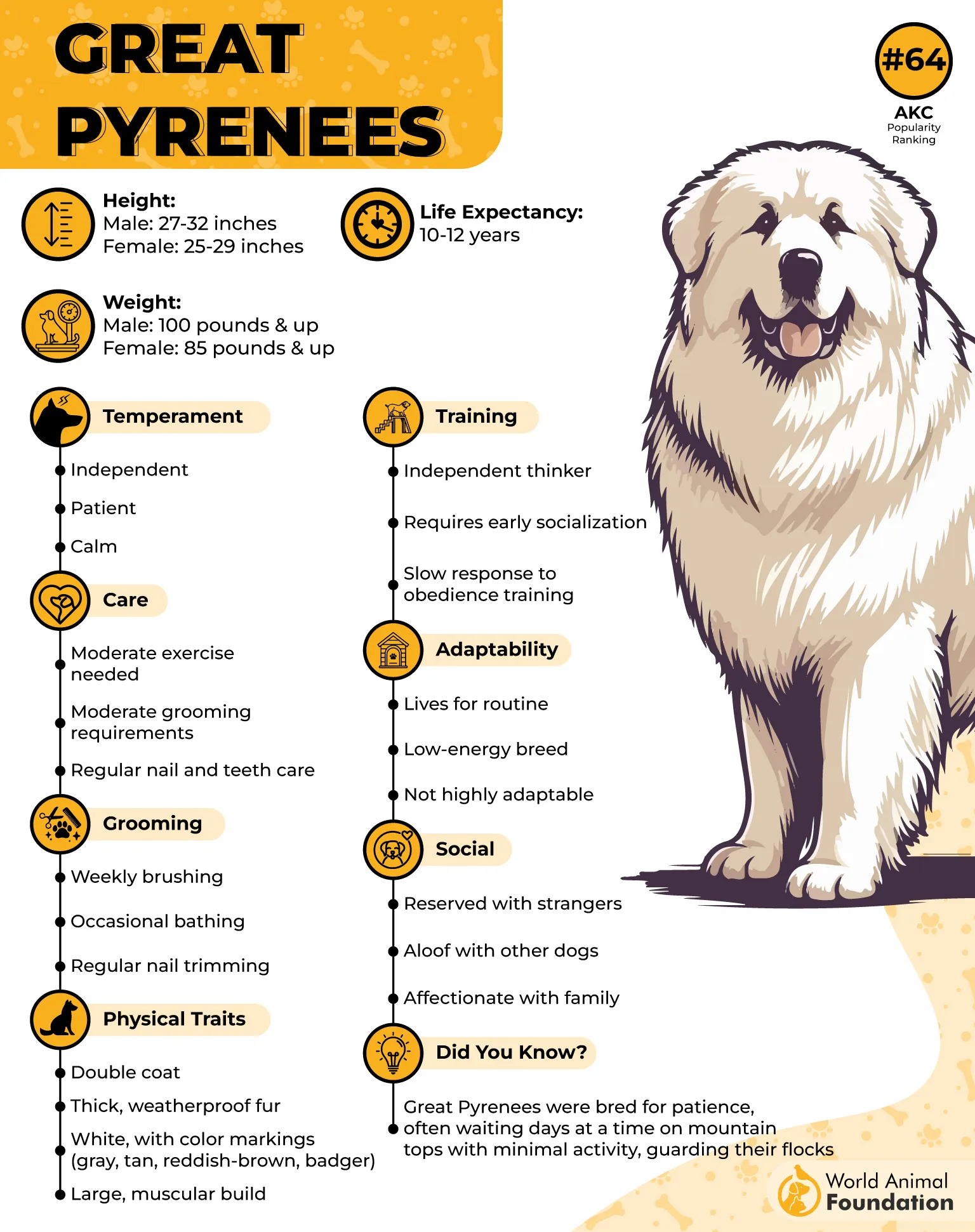
You might find them snoozing by the fire or happily lounging with the family, but trust me, their calm demeanor masks the instincts of a fierce guardian.
One quirky thing about the Great Pyrenees? They sport double dewclaws on their back legs—like they came with extra built-in snowshoes! These unique toes probably helped them navigate steep, snowy slopes with the agility of a mountain goat. Talk about nature’s clever design.
Whether they’re standing guard over the flock or curling up at your feet, the Great Pyrenees blends warmth, strength, and a dash of mountain magic into one unforgettable package.
8. Caucasian Shepherd
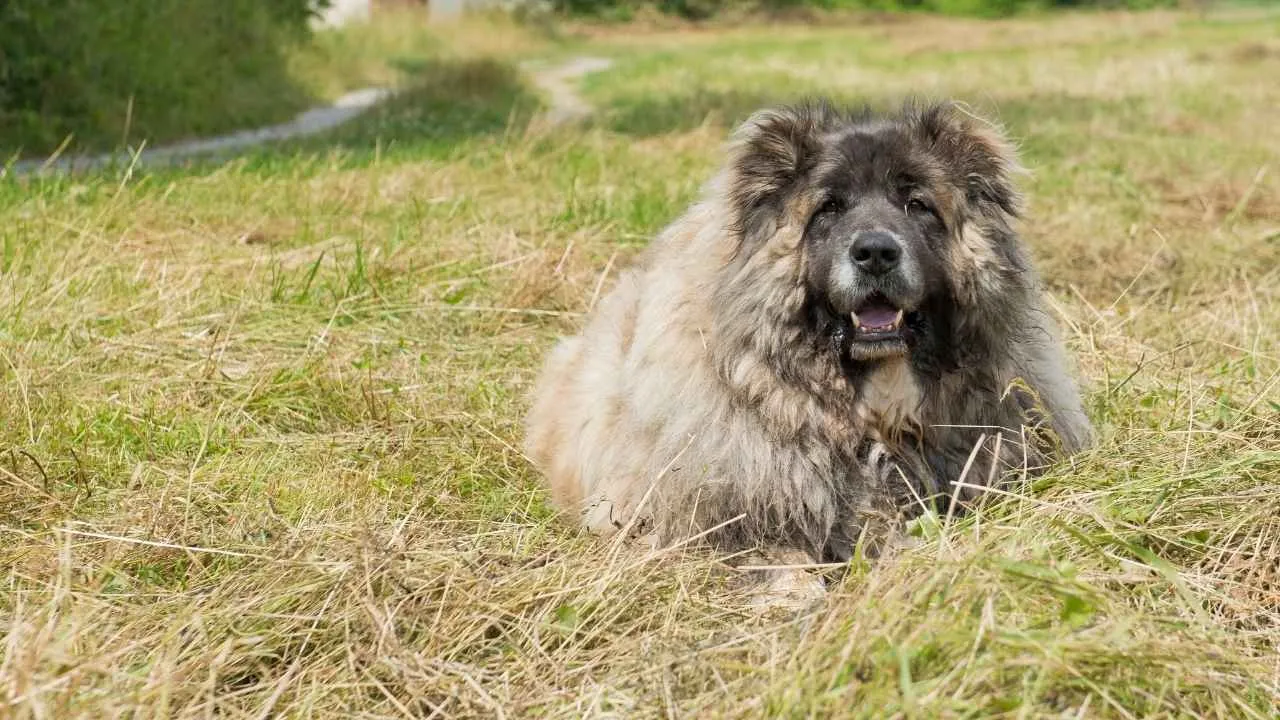
Caucasian Shepherd is the burly nightclub bouncer who’s also your grandma’s biggest fan. Originating from the rugged Caucasus Mountains, this breed was built to handle bears, wolves, and winters so cold your coffee freezes before you can drink it.
Before bringing home a Caucasian Shepherd puppy, it’s important to remember that this small fluffball will grow into a giant. These dogs weigh at least 100 pounds and can reach up to 170 pounds. Standing between 23 and 30 inches tall, they require a home with plenty of space to accommodate their size.
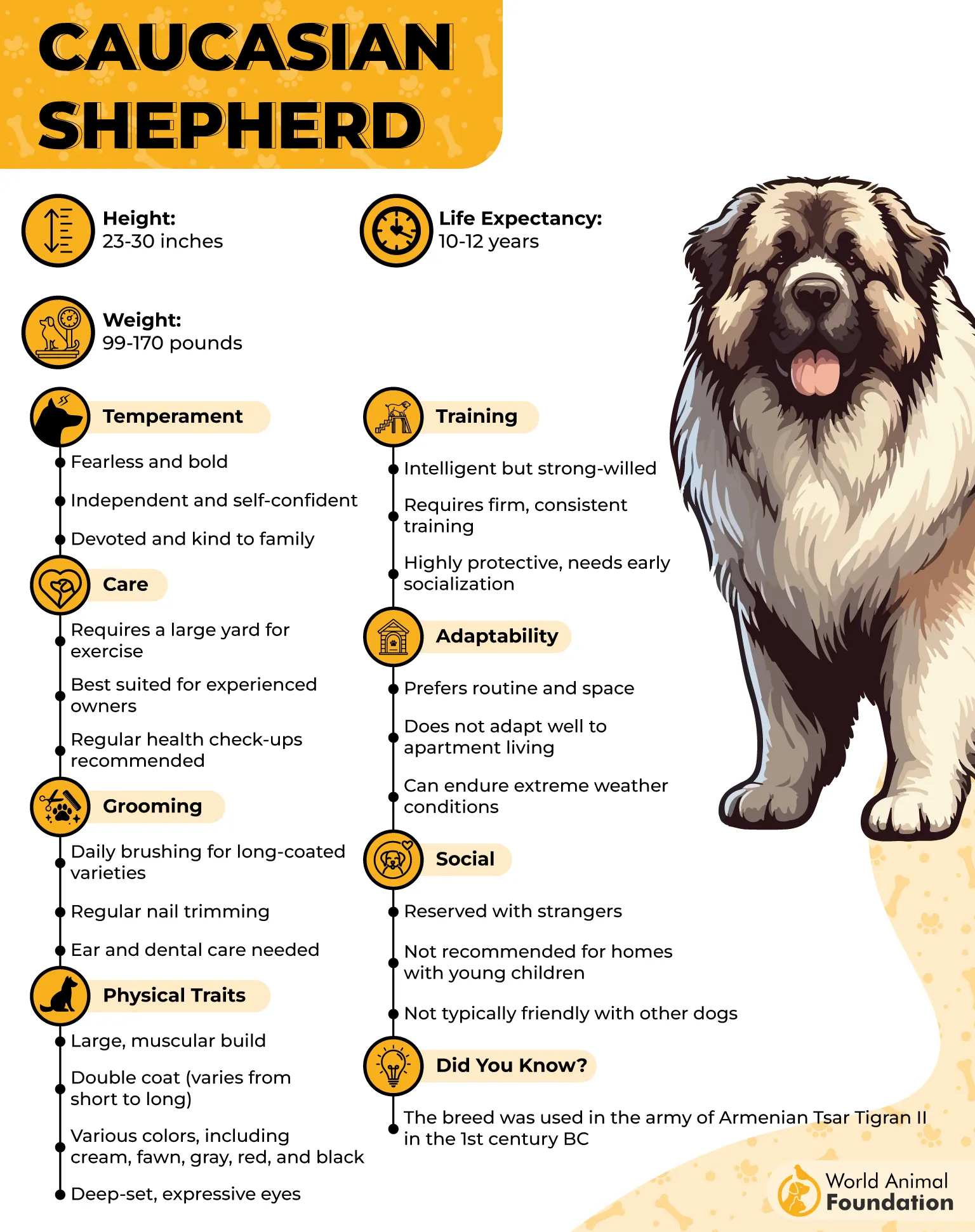
While they can keep small predators at bay, they’re more like, “Coyotes? Pfft. I was expecting something bigger.” Still, any raccoon with a lick of self-preservation isn’t going to test a dog the size of a couch with the bark of a diesel engine.
They are fiercely loyal, but they don’t hand out friendship bracelets on the first meeting—you’ve got to earn it. Once you’re in their circle of trust, they’ll defend you and your flock like a medieval knight defending a castle… except this knight has a fur coat and occasionally drools.
PetMD noted that Caucasian Shepherd Dogs are fiercely loyal to their families but also highly independent. They aren’t ideal for first-time dog owners and do best in homes with plenty of secure space to roam, such as a fenced yard.
Pro tip: Don’t expect them to chase every little fox. They tend to size up the threat first—probably calculating if it’s worth getting up from their comfortable spot in the shade.
9. Maremma Sheepdog
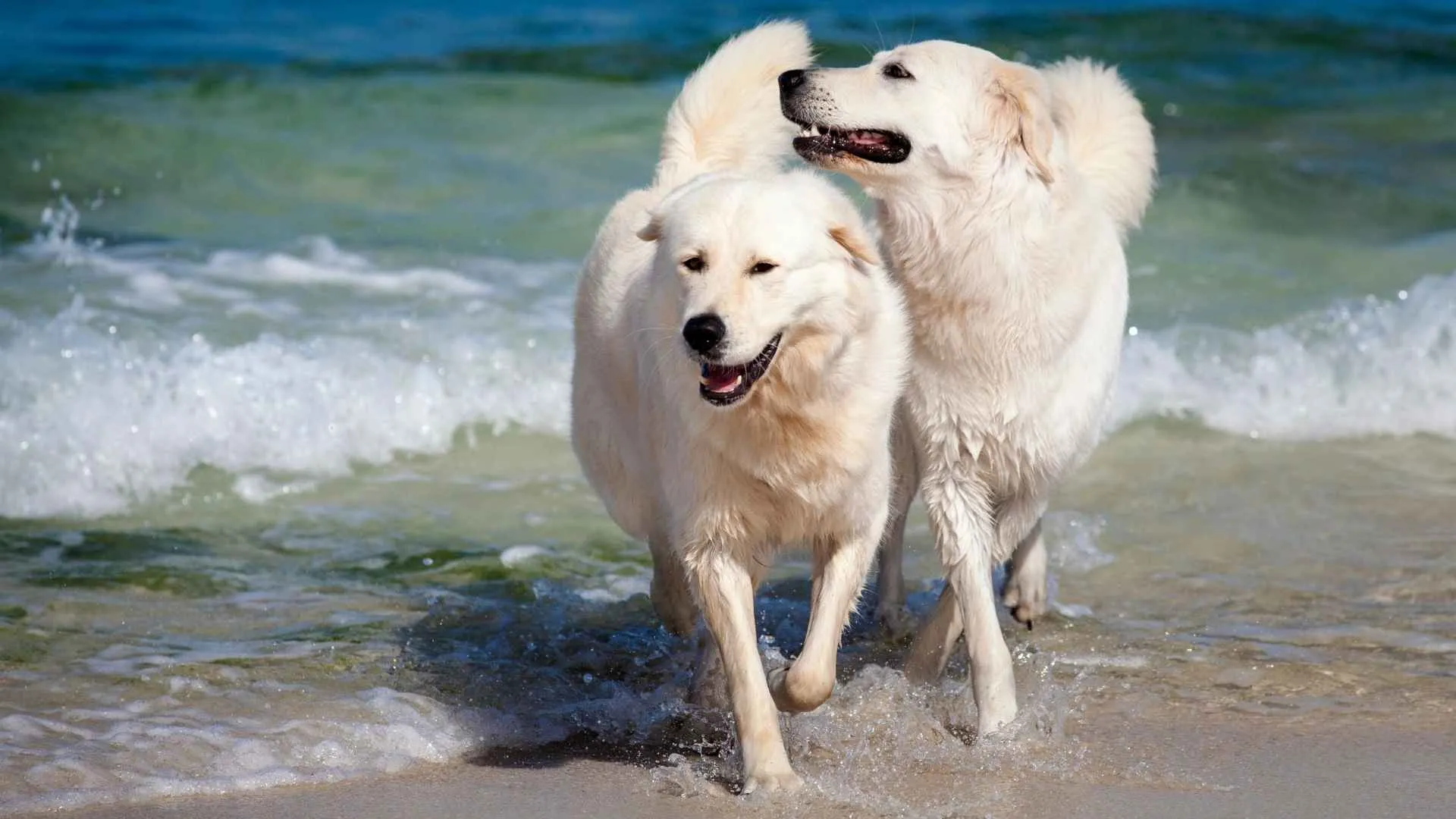
The Maremma Sheepdog is Italy’s answer to “Who’s going to watch the sheep while I’m making pasta?” For centuries, they’ve guarded flocks in the rolling hills of Tuscany and Abruzzo, which means they’re as comfortable staring down a predator as they are looking majestic in front of a mountain sunset.
Unlike the Caucasian Shepherd’s “storm the gates” energy, the Maremma is more of a diplomat. They work by being always there—calm, steady, and ready to throw out a deep warning bark that says, “Don’t even think about it.”
Their white coats help them blend in with the flock, which is both a sneaky defense tactic and a perfect way to trick predators into thinking, “Oh, just another sheep—wait… why does that sheep have teeth?”
They’re gentle with their charges, from lambs to chickens, but don’t mistake that kindness for weakness. They’ll flip the switch from sheep whisperer to predator discourager in half a second flat.
Purina says the Maremma is deeply devoted and loyal to its family, always staying vigilant against anything suspicious. This breed requires a very dedicated owner. They can be trained to a high level, which is important because a bored Maremma can become quite challenging to live with.
Conclusion
Other livestock dog breeds like the Great Pyrenees, Caucasian Shepherd Dog, Central Asian Shepherd Dog, Hungarian Sheepdog, Polish Tatra Sheepdog, and Pyrenean Mastiff are excellent farm dogs known for protecting livestock from small predators.
These guardian or herding dog breeds have strong prey drives and unique breed characteristics that make them well-suited to guarding sheep and other livestock on large farms and pastures. Originating from regions like Central Asia and even dating back to the Roman Empire, these dogs form strong bonds with both humans and animals.
They balance their protective qualities with being wonderful family pets, often gentle with children, while vigilantly guarding property and livestock from potential threats.


